It’s not often that you can step out your front door directly into a top-tier ski race, but with an assist from Mary Beth (who needs to work on her fireman’s carry, truth be told), that’s exactly what I enjoy each year at the Essex River Race. For the second year, the race was being hosted by the Riversbend Restaurant at the Essex Marina rather than at its ancestral home at the Shipbuilding Museum and public launch. Fond memories of scrambling for parking, dodging traffic, and replanking my ski persist, but apparently the future is all about convenience and composite fibers. Can’t wait to see what they do with the remake of Pinocchio.
Despite the venue change, we’d still be running the traditional 5.75 mile lollipop course – heading out the Essex River, rounding Cross Island, and returning back up the river. With high tide occurring just before the start and a light breeze out of the east, times would likely be fast. I expected Chris Chappell and Jan Lupinski to be near the pointy end of the 23 ski pack from the get-go, but hoped that I might finish at the apex. Glancing warily at the overcast sky, we wondered if the rain would hold off until we were soggily eating our pizza and burgers at the after-party.
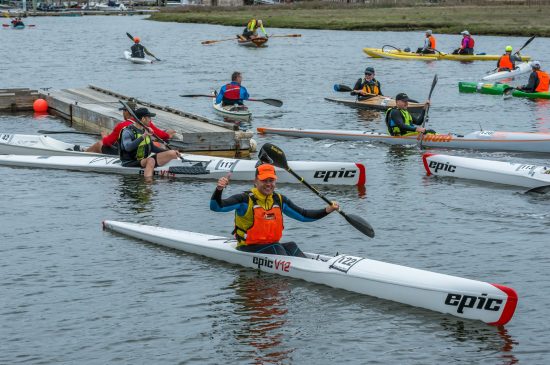
There were significant polarity issues prior to the start. (Photo courtesy of Olga Sydorenko)
At last year’s race, I had missed the start while in a deep discussion with Tim Dwyer about the epidemic of tardiness in the younger generation. The year before that, I fell out of my boat 10 seconds before the gun while trying to turn on my GPS. While most racers aspire to a fast start on the Essex, my bar is set at “uninteresting”. I’m sure everyone was anxious to see what kind of exuberant pre-race shenanigans I would be up to in 2018. Not me. I started my GPS on shore, dropped Tim as a friend (Facebook and otherwise), and double-checked that I wasn’t wearing any flammable clothing. Even with such extraordinary precautions, I wasn’t optimistic.
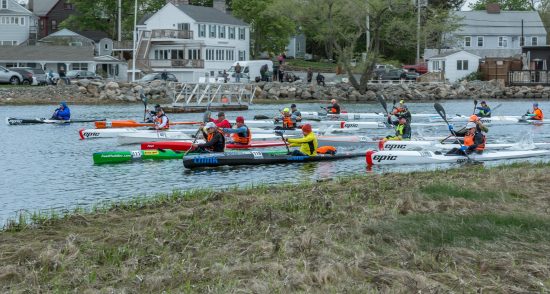
Fortunately, within-tolerance longitudinal alignment was achieved prior to the gun. (Photo courtesy of Olga Sydorenko)
I positioned myself on the right side of the line so that my inevitable fiasco would take out as few other paddlers as possible. My anxiety grew as the starter counted us down, but at “Go!” I found myself inexplicably upright, holding a paddle, and not choking on a nectarine pit. Success! In fairness, I did suddenly realize that the paddle wasn’t the one I had actually intended to use, but that seems like quibbling. I even thought I got off the line relatively quickly. That is, until after the race when Tim asked me why I missed the start this year. Ouch. I knew there was a reason I unfriended that guy.
Chris was off the line with characteristic flair, seizing the early lead but unable to keep a pesky Jan from hanging off his port draft. Francisco Urena had an excellent start as well, trailing the two leaders by a length or so but easily separating himself from the rest of the pack. I worked my way by Wesley and a rejuvenated Timmy Shields, catching up to Tim and Hank Thorburn a few moments later. Francisco, having consumed an hour’s worth of calories in the first two minutes of the race, had throttled back to a more reasonable burn rate, but his still-glowing paddle blades were emitting clouds of hissing steam each time they hit the water. I managed to slide by with only minor scalding. Three or four lengths ahead, Jan and Chris continued to lead the charge through the winding estuary.
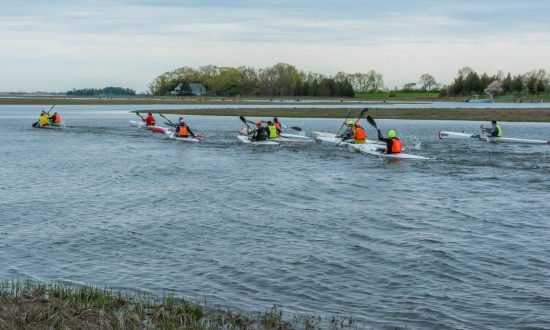
That’s me on the far right. Probably not my best early showing, but like they say: Any start you can walk away from is a good one. (Photo courtesy of Olga Sydorenko)
With Jan pulling Chris around successive bends, I settled into an uncomfortable chase position. I wasn’t losing ground, but neither was I getting any younger. Mindful of last year’s Hudyncia-on rowboat collision, I warily followed the leaders as they negotiated through the field of oncoming behemoths finishing from their earlier heats. Roughly a mile into the race, I finally managed to snag a seat on Chris’ stern wake. As anyone familiar with his linebacker physique will tell you, that’s the First Class of drafting positions. And I’m talking Emirates, not Delta. All of your cares evaporate. I had finished the fois gras and was just about to order my complimentary foot massage, when sudden turbulence forced me to bail out from my cushy post.
At low tide, the Essex River consists of a sinuous navigable channel. You follow the river, you’re necessarily following the channel. At high tide, the river consists of a sinuous navigable channel cruelly concealed within a featureless expanse of semi-navigable flats and soul-sucking shallows. Cutting a corner too tightly (spoiler – that’s foreshadowing), Jan had led us into one of the latter. I saw the first thin stems of grass emerging from the water just before my paddle started striking the muddy bottom. Thanks to Archimedes displacement principle, Chris found himself in an even stickier situation. I was therefore able to take advantage of the situation to sneak by, carefully matching Chris oath for oath in an attempt to disguise my glee at this unexpected windfall.
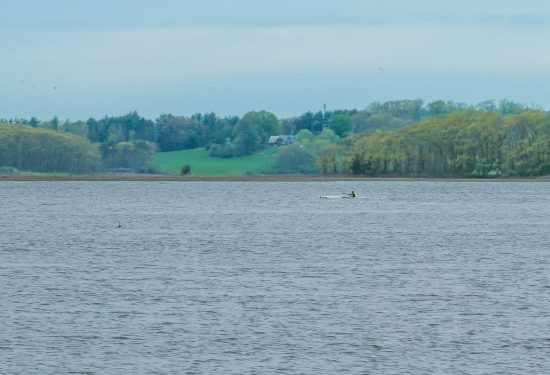
With proper cropping, the inescapable loneliness of man becomes apparent. (Photo courtesy of Olga Sydorenko)
Jan had managed to break free while this was transpiring. By the time we were back in deep water, he was three lengths ahead. Chris had dropped back slightly, but since he was taking a different line towards Conomo Point, it was difficult to tell just how much I had been able to pull away from him. As we approached the gap separating Cross Island from the point, a modest headwind picked up, which thoughtlessly slid over to our beams once we turned up the east side of the island. The resulting side chop could be measured in inches, but I feared it would be enough to throw me off what little game I had on my V14. Doing 95% of your training on a tiny wind-protected lake may not be the smartest surfski practice, but it’s the only way I know. So it came as a pleasant shock that I was able to maintain pace with Jan along this unsteady stretch.
I took stock of the situation as we neared the halfway point of the race. Once we rounded the northeast corner of Cross, we’d enjoy a brief downwind section before rounding into the lee of the island and heading back up the estuary. We’d perhaps receive a little boost from the wind along parts of that return trip, but the ebbing tide would be giving some push-back. Jan would probably open up his lead a bit on the short downwind run, but I figured I’d have a good chance of passing him during the grind to the finish. In speaking with him afterwards, he sincerely doubted that latter proposition. Apparently we both could benefit from some humility lessons.
We never got to discover which of us had the goods to back up his bluster. As I mentioned above, I’m no stranger to race-day mishaps. Jan, however, is in a league that most of us can only have nightmares about. Leaking boats, malfunctioning rudders, magnetic anomalies throwing off his internal compass… I’d provide a complete list of misfortunes, but I don’t want to incur data overage charges for those of you reading on mobile devices. Jan is undoubtedly snake-bit, but occasionally you wonder if his spirit animal isn’t one of those two-headed vipers you might see at a carnival – there’s always the distinct possibility of a self-inflicted fanging.
After repeated harsh empirical lessons, it’ll eventually come as no surprise to paddlers that a point of land is often accompanied by a rocky shelf extending outwards some distance underwater. On the other hand, it is a bit surprising that this would be true of the low-lying muddy northeast point of Cross Island. Back to the first hand, we’ve all raced here before and seen the rudder-destroying rocks around this point. But throwing it over one last time to the second hand, at high tide it wouldn’t be unreasonable to expect these obstacles to be several feet under water. Jan, perhaps juggling these conflicting factors in a reasoned cost-benefit analysis or perhaps just letting race-time adrenaline pull him along, cut within a boat’s length of the point.
Probably the only reason Jan wasn’t thrown clear of the wreck was that his sacrificial hull gradually scraped off most of his speed before his rudder finally smashed into the rock. When I close my eyes, I can still hear the crunch of carbon fiber, the piteous wails, and – barely discernible over the other sounds of devastation – the licking of chops. Blood was in the water. Although I hadn’t planned on cutting the point quite as close as Jan, I was far enough back that I could use his example to adjust my course further out. Even so, I was forced to hold my breath and grimace while watching various rocks slide just beneath my rudder.
It initially appeared that Jan might have miraculously escaped his grounding with just superficial damage. He freed himself and continued paddling. A few moments into the downwind section, however, it became clear that he had serious mechanical issues (coincidentally, the exact thing he says about me when analyzing my stroke). Steering compromised by a bent rudder shaft, Jan was forced to pull over to the island to attempt field repairs. During this time, Chris and Tim moved into second and third positions.
I had no idea how long Jan would be side-lined, so I maintained an appropriately high-level of anxiety that he’d be appearing again any moment. I tapped into this fear, along with bursts of short-term incentive provided by picking off boats from slower classes, to push through for the win. In an impressive recovery, Jan straightened his rudder shaft enough to restore steering and chased down first Tim, and then Chris to take silver. Chris finished third less than 10 seconds later, with Tim an equal distance behind him. Wesley took the fifth spot. In the SS20+ class, Bill Kuklinski was the repeat winner, with Ken Cooper and Dave Grody sharing the podium. Paddling what I believe to be the first double ski ever raced at the Essex, Gary Williams and Robin Francis established impressive precedence.
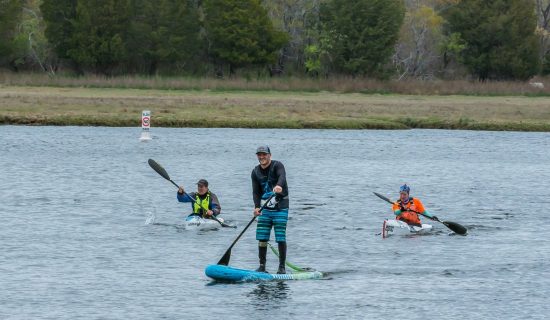
This poor sap has no idea he’s about to be swept off his board as Leslie and Mary Beth fly by in their battle for glory. (Photo courtesy of Olga Sydorenko)
Despite the isolated drama in the men’s race, the real excitement of the day was in the women’s ski competition. After having to be physically separated several times in the parking lot before the race, noted hot-heads Mary Beth and Leslie Chappell were hungry to get back in the buckets after their knock-down, drag-out fight on the Charles River a few weeks previous. Leslie had emerged victorious in that bout, so Mary Beth was anxious for on-the-water payback (once I had talked her out of a shiv-related payback, of course). They exchanged leads several times during the race, but Leslie nosed out MB by inches at the line. First-time ski racer Jean Kostelich took third. As Chris joked afterwards, “If Leslie had been in a 540 rather than a 550, it would have been a tie!” And as Mary Beth similarly, er, joked, “If you had just let me stab her in the eye, things would have been different!” It’ll certainly be fun to see how this rivalry evolves over the season.
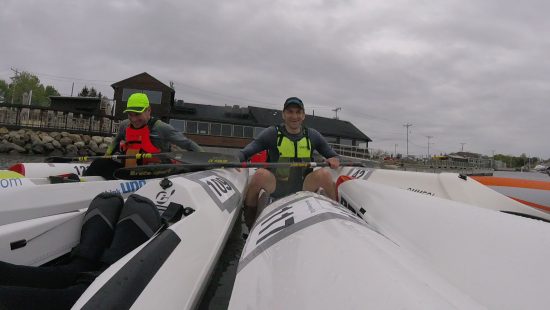
Scientists are still baffled by the “rafting” behavior of paddlers, but pray to God that it doesn’t have anything to do with reproduction.
Everyone seemed in high spirits as we recapped our races (with appropriate sound effects and embellishments) while overlooking the estuary. Despite the fact that Bill and his band weren’t providing post-race entertainment this year, I shouted requests at him every few minutes, and slipped a fiver in his g-string at the end of the festivities. Some traditions will never die. After the awards (and do we really need separate classes for each individual feather angle/paddle length combination?) a select crew – consisting mostly of those who, as children, frequently found themselves eagerly climbing into unmarked vans – helped Mary Beth carry me back to our place for additional race analysis and supplemental alcohol. As always, thanks to Chris Sherwood for serving as the beer sommelier for the occasion.
For those of you tired of short races in protected water, have I got a deal for you! We’ll be reconvening on June 2nd at Sakonnet River Race down in Rhode Island. It’s 12.5 miles in some of New England’s most inscrutable conditions (could be calm, could be not). You must preregister at PaddleGuru. And for those interested in joining the most prestigious Tuesday night racing forum in the greater Beverly area of Massachusetts, the 14th season of the Salem League is starting up on May 22. For 15 consecutive weeks, you’ll be developing your skill set under Bill K’s curmudgeonly tutelage. Don’t forget tip money!
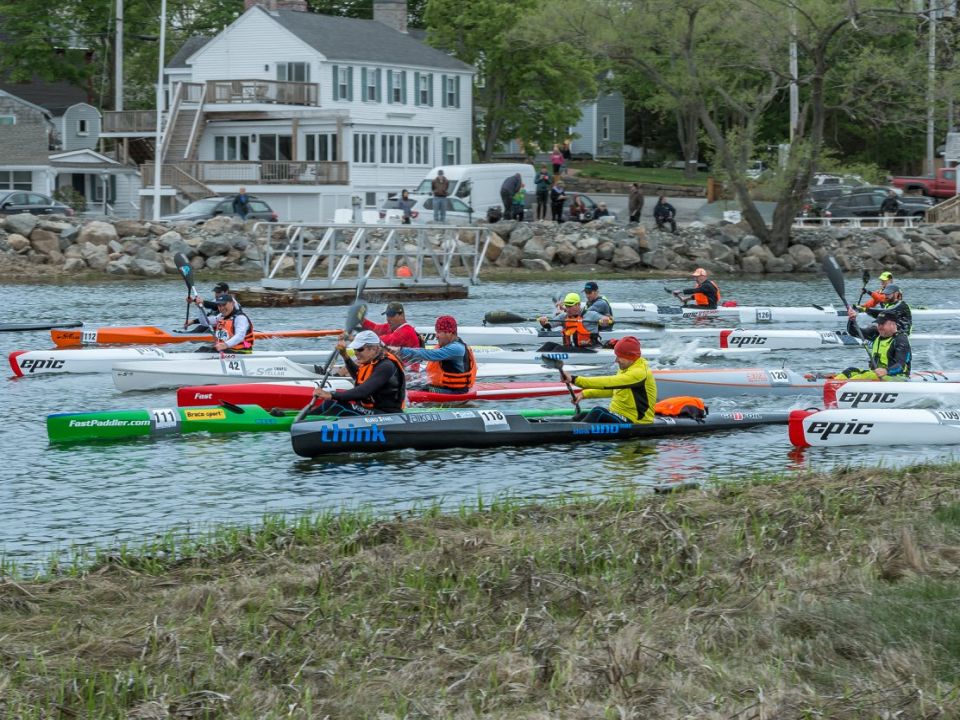
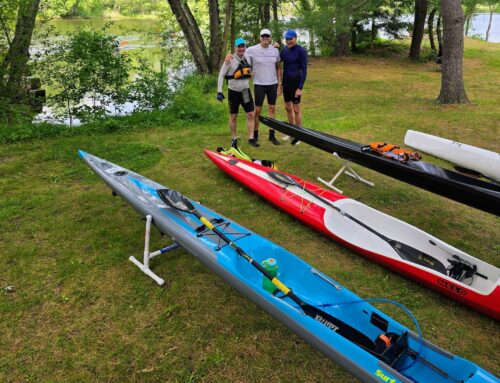
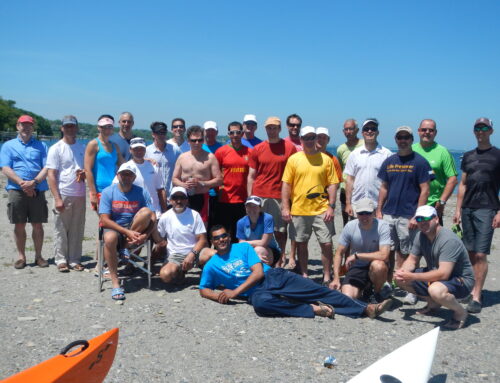
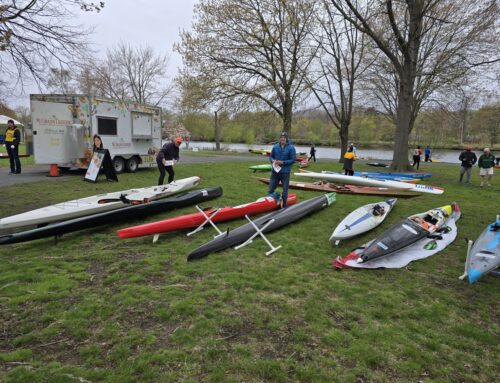
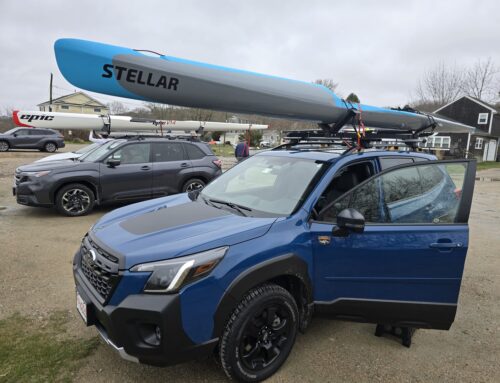
Leave A Comment
You must be logged in to post a comment.